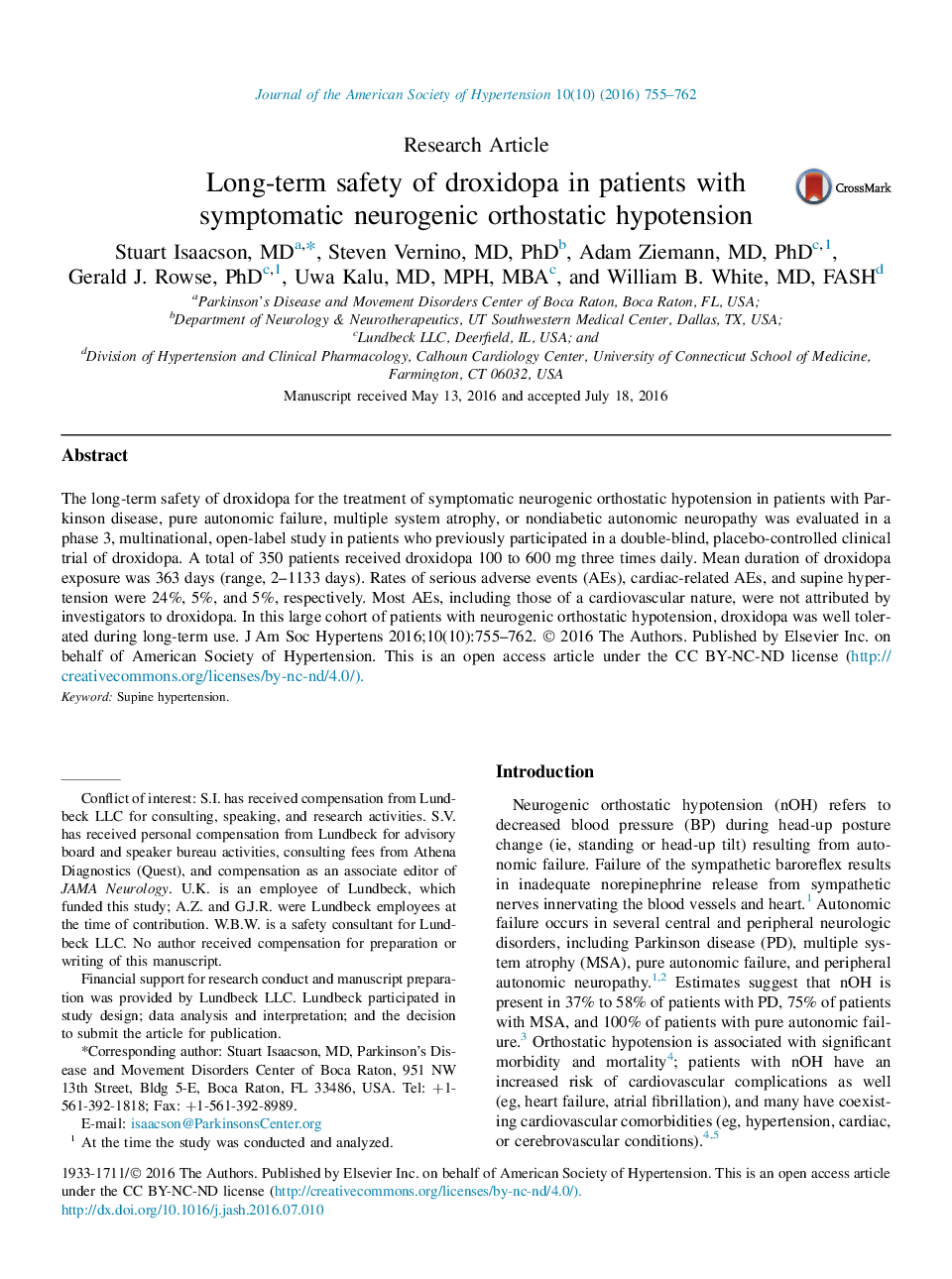| Article ID | Journal | Published Year | Pages | File Type |
|---|---|---|---|---|
| 5613788 | Journal of the American Society of Hypertension | 2016 | 8 Pages |
â¢Droxidopa is a novel prodrug used to treat neurogenic orthostatic hypotension.â¢Data from the largest cohort treated with long-term droxidopa to date are analyzed.â¢Rates of cardiovascular adverse events, including supine hypertension, were low.â¢Most adverse events were related to patients' underlying neurologic disease.â¢Droxidopa has a favorable benefit-to-risk ratio in patients with neurogenic orthostatic hypotension.
The long-term safety of droxidopa for the treatment of symptomatic neurogenic orthostatic hypotension in patients with Parkinson disease, pure autonomic failure, multiple system atrophy, or nondiabetic autonomic neuropathy was evaluated in a phase 3, multinational, open-label study in patients who previously participated in a double-blind, placebo-controlled clinical trial of droxidopa. A total of 350 patients received droxidopa 100 to 600Â mg three times daily. Mean duration of droxidopa exposure was 363Â days (range, 2-1133Â days). Rates of serious adverse events (AEs), cardiac-related AEs, and supine hypertension were 24%, 5%, and 5%, respectively. Most AEs, including those of a cardiovascular nature, were not attributed by investigators to droxidopa. In this large cohort of patients with neurogenic orthostatic hypotension, droxidopa was well tolerated during long-term use.
